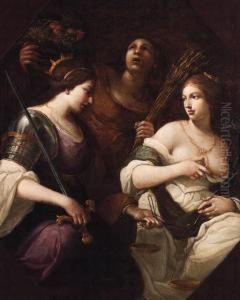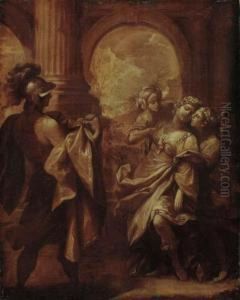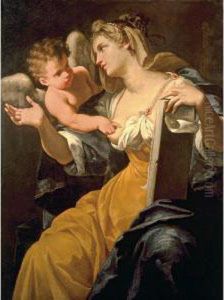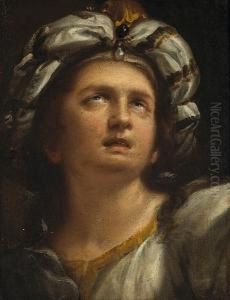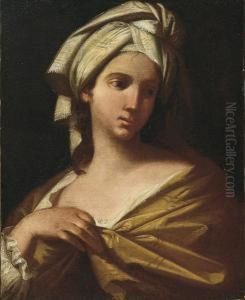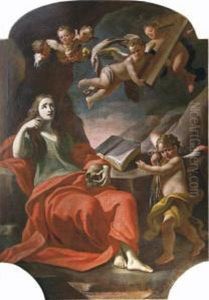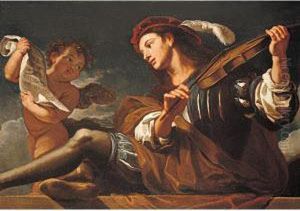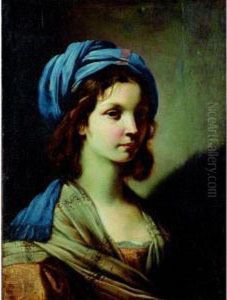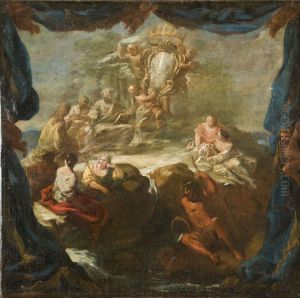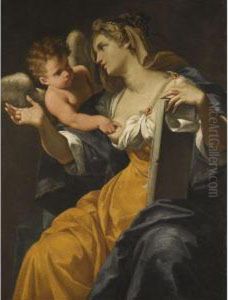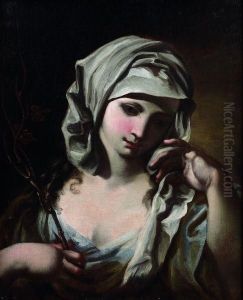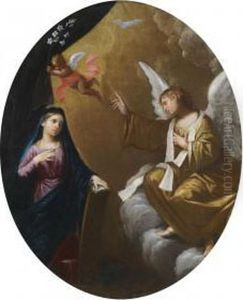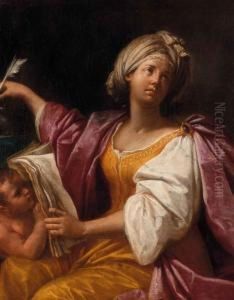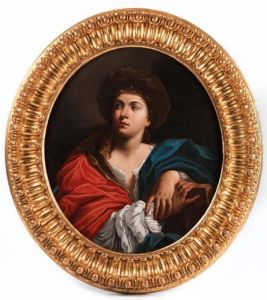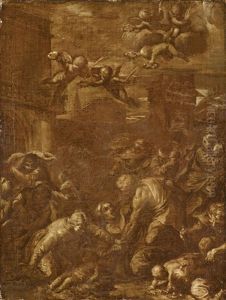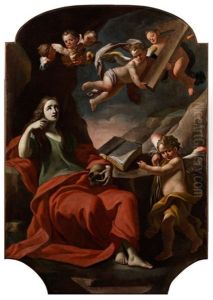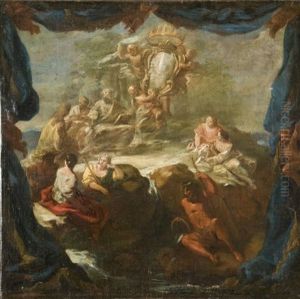Lorenzo Pasinelli Paintings
Lorenzo Pasinelli was an Italian painter active during the Baroque period. Born on September 4, 1629, in Bologna, Italy, he is often recognized for his contributions to the Bolognese School of painting. Pasinelli initially trained under his father, a decorative painter, before becoming an apprentice to Flaminio Torre. Following Torre's early death, Pasinelli continued his artistic education under Simone Cantarini, a prominent pupil of Guido Reni.
Pasinelli's style was influenced by the dramatic lighting of Caravaggio and the classicism of the Carracci family, founders of the Bolognese School. He was particularly adept at religious and mythological subjects, filling his compositions with dynamic movement and emotional intensity. His skill in creating depth and atmosphere through color and light was widely admired.
Throughout his career, Pasinelli remained in Bologna, where he became a respected member of the Accademia degli Incamminati, an institution originally founded by the Carracci. He ran a successful workshop, which became one of the most productive in Bologna during the second half of the 17th century. Pasinelli's workshop trained numerous artists, including his most famous pupil, Giovanni Antonio Burrini.
Pasinelli's works can be found in many Italian churches and public collections. His altarpieces and frescoes are notable for their rich palette and dynamic compositions, which often reflect the influence of the Venetian School. Despite being less well-known today, in his time, Pasinelli was celebrated for his creativity and his ability to infuse his classical training with the energy and drama of the Baroque.
Lorenzo Pasinelli died on March 4, 1700, in Bologna. His legacy continued through his students and the lasting impact of his works on the development of late Baroque painting in Northern Italy.





